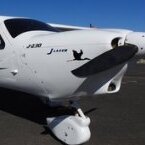-
Posts
3,464 -
Joined
-
Last visited
-
Days Won
47


RFguy replied to Kyle Communications's topic in AUS/NZ General Discussion

RFguy replied to Peasant_Pilot's topic in Aircraft Building and Design Discussion

RFguy replied to Kyle Communications's topic in AUS/NZ General Discussion

RFguy replied to Kyle Communications's topic in AUS/NZ General Discussion

RFguy replied to Kyle Communications's topic in AUS/NZ General Discussion

RFguy replied to Kyle Communications's topic in AUS/NZ General Discussion

RFguy replied to BrendAn's topic in Aircraft Incidents and Accidents

RFguy replied to BrendAn's topic in Aircraft Incidents and Accidents

RFguy replied to Kyle Communications's topic in AUS/NZ General Discussion

RFguy replied to Kyle Communications's topic in AUS/NZ General Discussion

RFguy replied to red750's topic in Aircraft Incidents and Accidents

RFguy replied to red750's topic in Aircraft Incidents and Accidents

RFguy replied to red750's topic in Aircraft Incidents and Accidents

